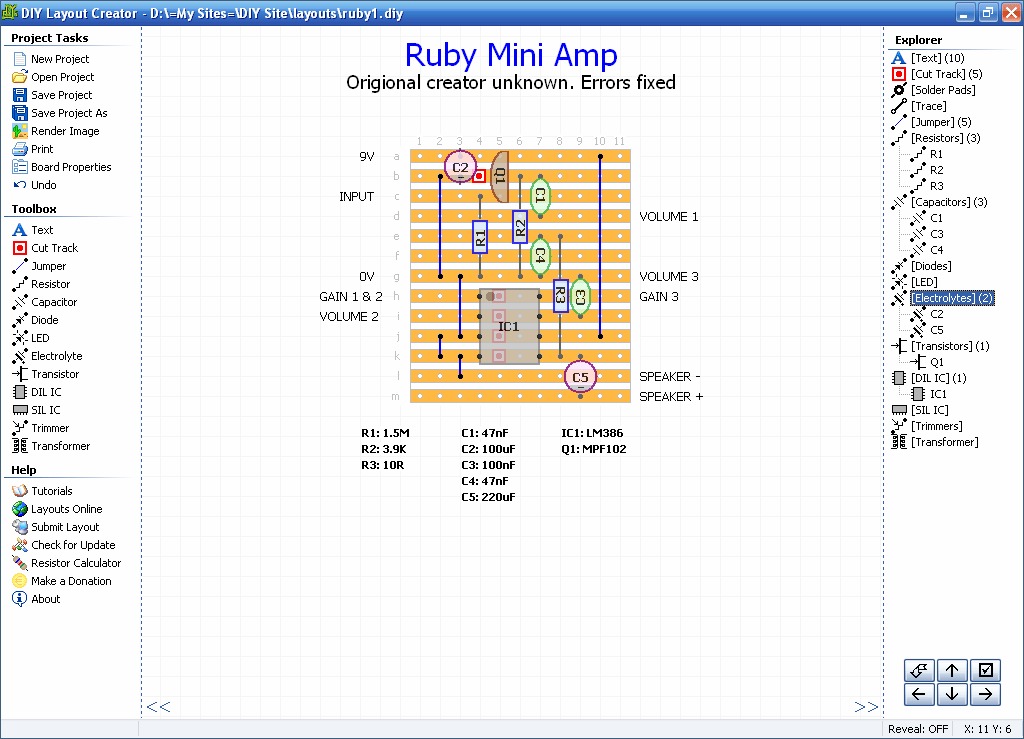- Free and opensource software: The best choice if you’re going to use a free PCB design software. There’s many of them, just be sure to pick an active project with a large community base. Free software: They are free to use, without any feature restriction or expire date, still the software source code is not avail.
- Fritzing is an open-source hardware initiative that makes electronics accessible as a creative material for anyone. We offer a software tool, a community website and services in the spirit of Processing and Arduino, fostering a creative ecosystem that allows users to document their prototypes, share them with others, teach electronics in a classroom, and layout and manufacture professional pcbs.
Tinkercad is a free online collection of software tools that help people all over the world think, create and make. We’re the ideal introduction to Autodesk, the leader in 3D design, engineering and entertainment software.
Is there any usable program that could help me organize elements on PCB breadboards? Or maybe some kind of autorouter?
By PCB breadboard I mean something like this:
Stephen Collings xx77aBsxx77aBs
xx77aBsxx77aBs4 Answers
$begingroup$Have you tried VeeCad?
The screenshots/examples on the web page make it look as if it is limited to board with horizontal strips. But according to the feature matrix, it does '[c]ustom track patterns, including SMD components.'
Googling around, I found this screenshot of a custom board layout being used in VeeCad (see below).
Another possibility is DIY Layout Creator. This is multi-platform freeware program (GPLv3 license).
KazKazBreadboard Layout Tool
$begingroup$I don't know of any tailored solution, but I have a workaround/trick that generally makes it a lot easier to design stripboard layouts.
- Configure your software package to use traces the same width as your stripboard tracks.
- Set up minimum component and trace proximity to be about 1.5 times the width of the gap between tracks.
- If possible, force the routing to only use horizontal and vertical traces. This will remove those pesky 45° traces that can't actually be reproduced on a stripboard, which makes things a whole lot easier later on.
- If your software supports it, use the autoplacement feature.
- Move components around to be in a direction that can be used on a stripboard, e.g. make ICs run vertical, not horizontal. If you can snap components to a grid, it's very useful to do so as it essentially enforces the components to sit in fake tracks.
- Run the auto-routing.
- Manually translate the resulting routes into a stripboard design.
This process does a lot of the work for you. It's been pretty useful to me when prototyping larger circuits.
PolynomialPolynomial $begingroup$
$begingroup$No, without some real work-around as JGord suggested. However the PCB software can help you place the parts in an intelligent way by showing the 'rats nest' of connections as you place them.
stevenvhThere are two conflicting requirements here:
- Autorouting
- Breadboards
Basically, everyone (company, person, etc...) who has enough money to afford an autorouter is not going to bother with breadboards at all. As such, there is no incentive to bother designing such a product.
So basically, unless it's part of an open source project (of which I don't exactly have a high opinion), the answer is no.
Connor WolfConnor WolfBreadboard Layout Online
